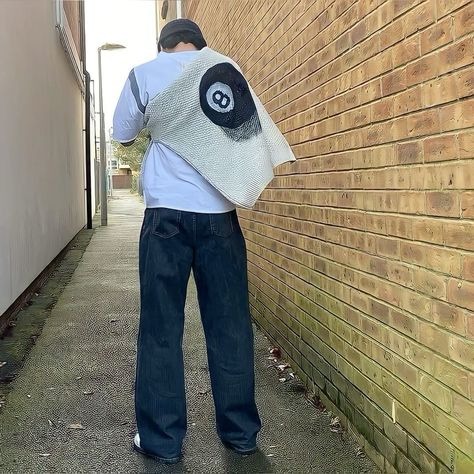The Timeless Appeal of T-Shirt: A Fashion Staple

Introduction
T-shirts are one of the most versatile and widely worn pieces of clothing in the world. They have evolved from being an undergarment to a fashion statement that transcends age, gender, and culture. Whether it is a plain white tee, a graphic t-shirt, or a designer piece, t-shirts hold a special place in the fashion industry and people’s wardrobes. This article explores the history, styles, materials, trends, and the impact of t-shirts on fashion and society.
The History of T-Shirts
The origin of t-shirts dates back to the early 20th century. The first known t-shirts were worn by laborers in the late 19th century as a lightweight, breathable alternative to traditional workwear. By the early 1900s, the U.S. Navy adopted them as part of their standard uniform, providing sailors with a comfortable, short-sleeved undergarment.
T-shirts gained popularity in mainstream culture after World War II when returning soldiers continued wearing them casually. In the 1950s, Hollywood icons like Marlon Brando and James Dean popularized the t-shirt as a rebellious fashion statement in movies like A Streetcar Named Desire and Rebel Without a Cause. From that point on, the t-shirt became a symbol of youth, freedom, and self-expression.
Styles and Types of T-Shirts
T-shirts come in various styles, catering to different tastes and occasions. Some of the most common types include:
- Crew Neck T-Shirts – These are the classic round-neck t-shirts that suit most body types and are a wardrobe staple.
- V-Neck T-Shirts – With a V-shaped neckline, these t-shirts provide a more refined look and are often chosen for layering.
- Polo T-Shirts – Featuring a collar and buttons, polo t-shirts are considered semi-formal and are often worn in business-casual settings.
- Graphic T-Shirts – These feature printed designs, logos, or messages, allowing individuals to showcase their personality, interests, or brand affiliations.
- Henley T-Shirts – Similar to crew necks but with a buttoned placket, adding a touch of sophistication.
- Oversized T-Shirts – These are trendy, relaxed-fit t-shirts that provide comfort and a modern streetwear look.
- Longline T-Shirts – With an extended length, these t-shirts are popular in contemporary fashion, often paired with slim-fit jeans or joggers.
Materials and Fabric Choices
The choice of fabric significantly impacts the comfort, durability, and overall feel of a t-shirt. Common materials used in t-shirt production include:
- Cotton – The most popular choice, known for its breathability, softness, and comfort.
- Organic Cotton – A sustainable option, free from pesticides and harmful chemicals.
- Polyester – Often blended with cotton, polyester adds durability and wrinkle resistance.
- Rayon – A lightweight fabric with a silky feel, often used in premium t-shirts.
- Linen – A breathable material ideal for warm weather.
- Tri-Blend (Cotton, Polyester, and Rayon) – Offers the best of all materials, providing softness, durability, and flexibility.
The Impact of T-Shirts on Fashion
T-shirts have played a significant role in fashion and culture. They have been used as a medium for political statements, brand marketing, and self-expression. From band merchandise to activist slogans, t-shirts allow individuals to showcase their beliefs and affiliations.
In high fashion, designers have transformed simple t-shirts into luxury items. Brands like Gucci, Balenciaga, and Off-White have elevated the status of t-shirts by incorporating premium materials, intricate designs, and limited-edition releases.
Popular T-Shirt Trends
Fashion trends evolve, and t-shirts are no exception. Some of the latest t-shirt trends include:
- Minimalist Designs – Plain, solid-colored t-shirts are timeless and versatile.
- Vintage-Inspired Prints – Retro graphics and distressed designs bring nostalgia to fashion.
- Tie-Dye T-Shirts – A resurgence of 70s and 90s fashion, tie-dye adds a fun, colorful element.
- Slogan T-Shirts – Messages that reflect political, social, or humorous statements are popular.
- Sustainable T-Shirts – Ethical fashion is on the rise, with brands focusing on eco-friendly materials and production.
How to Style T-Shirts
T-shirts are incredibly versatile and can be styled for various occasions. Here are some outfit ideas:
- Casual Look – Pair a basic t-shirt with jeans and sneakers for an effortless everyday outfit.
- Smart Casual – Layer a t-shirt with a blazer and chinos for a polished yet relaxed look.
- Streetwear – Opt for an oversized graphic tee with joggers and high-top sneakers.
- Summer Style – Wear a lightweight linen t-shirt with shorts and sandals.
- Layering – A t-shirt can be worn under a denim jacket, cardigan, or bomber jacket for added style.
Conclusion
T-shirts have come a long way from their humble beginnings as an undergarment to becoming a global fashion staple. Their versatility, comfort, and ability to make statements ensure that they remain relevant across generations. Whether dressed up or down, t-shirts continue to be a must-have in everyone’s wardrobe, proving that simplicity can be both stylish and powerful.
